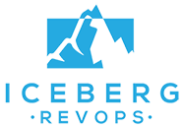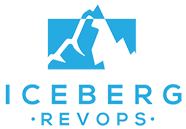- What are Product-Led Growth Metrics? How are They Different from Sales-Led Metrics?
- What Makes a Metric Worth Tracking? Insights From Operations Professional, Jason Thomas
- 10 Key Product-Led Growth Metrics You Can’t Afford to Ignore
- Customer Acquisition Cost (CAC)
- Average Revenue Per User (ARPU)
- Customer Lifetime Value (CLV)
- Free Trial / Freemium Conversion Rate
- Expansion MRR
- Time-to-Value (TTV)
- Product-Qualified Leads
- Product-Qualified Accounts
- Feature Adoption Rate
- Logo Churn
- Net Revenue Retention (NRR)
- Marketing Qualified Lead (MQL): is it outdated for PLG Companies?
- Bringing Your PLG Metric Into Focus
Less is more when it comes to which data your teams get.
What does this mean?
Think of it like using a 200-watt bulb in a 40-watt lamp. Too much wattage and the bulb will burn out. Your team will too if you give them too much data.
That’s why you need to get uncomfortable with ruthless prioritization and avoid overwhelming your team with data and metrics.
That being said, you can’t focus on single metrics and expect them to give you the full picture of how healthy your pipeline is or how well your product is meeting your users’ needs.
You need to find the balance between being lean, but getting enough data to paint a full picture of your PLG motion.
As a team of RevOps specialists, we understand how delicate that balance can be.
That’s why we’re here to help you develop a framework for deciding what metrics you should track and give you an overview of the PLG big hitters to help you focus on what matters.
What are Product-Led Growth Metrics? How are They Different from Sales-Led Metrics?
Product-Led Growth metrics are a set of KPIs that help a company understand and optimize their product-led growth motion. They give you insight into product usage, churn rate, feature adoption, revenue, and much more.
PLG metrics span departments, including metrics used by Revenue, Sales, Product, Marketing, and Customer Success teams.
PLG companies will still measure metrics used by more traditional sales-led companies, such as Customer Lifetime Value (CLV), but will pay close attention to product-specific metrics like how many Product-Qualified Leads (PQLs) they’re generating.
What Makes a Metric Worth Tracking? Insights From Operations Professional, Jason Thomas
Most Product leaders struggle to be lean with their metrics, and this causes your team to become overwhelmed and distracted. We caught up with one of our Sales Operations specialists, Jason Thomas, to provide a simple checklist when it comes to deciding what metrics are worth tracking.
This 4-part checklist will help you rise above the cacophony and focus only on those metrics that will keep you steering in the right direction towards your business goals.
Rule #1: the metric is understood by everyone on the team
If your team doesn’t understand the metric, it’s not getting accurately measured. They should be able to explain the metric, why it’s valuable to them, and how to leverage it.
If you can’t get a general consensus for what a metric is and its importance, they’ll stop caring about it. They may even start entering shoddy values in your CRM to appease management.
Make sure they understand what they’re tracking and why.
Rule #2: know what influences that metric
A metric should be yes/no. Winning or losing. Buy or no buy.
Saying a given metric might be from cause A, but could also be from causes B, C, or D will just have your team throw out the metric entirely.
Rule #3: it’s relevant to your company’s wider goals
Your business goals should be quantifiable and measurable so alignment isn’t difficult. You always need to define what “better” looks like for your company. Maybe a sales team needs to do extra work to track their specific portion of the goal they’re responsible for (e.g. a % of a total revenue target for the company that they track instead of tracking the full number).
Rule #4: it’s actionable
A change in the metric should lead to a change in behavior. Strategy sessions, 1:1’s, pipeline meetings etc. are all opportunities to see if your team is taking a data-driven approach to their jobs. If the metric doesn’t mean anything to them, you won’t hear about it and won’t be able to use it with them.


Related content: How PLG is Shaping B2B SaaS
10 Key Product-Led Growth Metrics You Can’t Afford to Ignore
There are a lot of product-led growth metrics you could track across your customer’s journey. Which ones you track will ultimately depend on how mature your company is, what teams you have in place, your business goals, and a lot of other considerations.
This list isn’t exhaustive and it’s by no means prescriptive. However, it will give you a good overall understanding of some of the core metrics you can’t afford to ignore.
Customer Acquisition Cost (CAC)
What is it
Customer Acquisition Cost (CAC) calculates how much you spend to acquire a new customer. Your main goal is to reduce this number as much as possible.
Why it matters
PLG is associated with lower CAC, but that doesn’t mean a low CAC is a given. Besides, you might have multiple ways a customer can enter your funnel. You may still get trial users from inbound marketing or outbound Sales. You need to understand if what you’re spending in those areas is more than what you’re earning with a new user.
If it is, then it’s time to think about ways to reduce what you’re spending to acquire new customers. This may be improving your marketing operations, optimizing your sales process, and improving your product.
How it’s measured
Total amount spent on sales and marketing / total number of paying customers.
Average Revenue Per User (ARPU)
What is it
ARPU is self-explanatory: it’s how much revenue you generate, on average, per user. Your main goal is to increase this number. You can leverage upsells, cross-sells, and changes to your pricing to boost this.
Why it matters
An increase in ARPU can indicate that your sales and PLG initiatives are working well. Maybe you made a change to your pricing structure which led to an increase (or decrease) in ARPU.
How it’s measured
Total revenue generated (e.g. a quarter, year, etc.) / total number of paying users during that same time period.
Note that MRR, ARR, Upsells, and Cross-sells should all be included in the total revenue generated.
Customer Lifetime Value (CLV)
What is it
CLV is a gauge of how much your customers spend with your company on average. It’s a window into brand loyalty and how good your company is at keeping customers (remember, acquiring customers is only half the battle – you have to keep them as well).
Why it matters
This metric not only helps you understand how successful your company is at keeping customers loyal, but how much you should reasonably spend to keep them.That is, if you estimate one customer’s CLV to be $500, you wouldn’t spend more than that to try and keep the relationship. It wouldn’t be profitable.
This number tends to be lower in PLG companies because the barrier to entry to use your product is generally lower. The CLV of a Sales-led company is likely to be higher because the purchase is given more consideration over a longer period of time.
How it’s measured
Average value of a purchase * amount of time they spend using your product.
Let’s say on average your customers spend $780 and stay with your product for an average of 18 months. Your CLV would be 780*12= $9,000.
Free Trial / Freemium Conversion Rate
What is it
How many users convert to a paid account who have entered your self-service freemium or free trial funnel. You want this to be as high as possible, but there’s no set-in-stone “good” or “bad” conversion rate. It will depend on how high your Annual Contract Value (ACV) is, what free model you use, if you have a sales-assisted motion for upgrades, and many more factors.
Why it matters
A decrease or chronically low free trial to paid conversion rate can be indicative of a few problems. It could be because of a poor user experience, a lousy onboarding process, or you could be giving away too many features on your freemium plan, just to name a few.
Optimizing these processes and/or your free offering can dramatically boost this metric.
How it’s measured
Total number of free trial users / number of users who upgraded to a paid account * 100.
If you’ve netted 50 new paid users in the past month from 340 free trial accounts your conversion rate would be:
50/340 = 0.14
0.14*100= 14%
Your free trial to paid conversion rate is 14%.
Expansion MRR
What is it
Expansion MRR measures the added monthly revenue generated by existing customers upgrading their packages. You should pay close attention to improving this because it’s always cheaper to sell to existing customers than attracting new ones.
Why it matters
Understanding your expansion MRR can help you measure how effective your Sales team and sales automations are at getting customers to upgrade. Imagine you implemented a new tool that helps you automate sales plays. After 3 months you don’t notice any significant increase in expansion MRR so you need to investigate why that funnel isn’t working.
How it’s measured
Expansion MRR = total revenue from plan upgrades & upsells/cross-sells per month.
Time-to-Value (TTV)
What is it
The amount of time it takes for a new user to get value from your product. This might be creating a document, sending an invoice, getting an e-signature etc.
Why it matters
If your product has a long TTV the more likely it is that new users will drop off without upgrading their plan. This is why complex products with an unavoidably long TTV tend to steer away from PLG. If your product is easy to understand and TTV can be achieved during the onboarding process, you can’t afford to avoid this metric.
How it’s measured
Like most product data, this metric needs to be defined by combing through your own data and doing user research. At what moment do users really see the value in your product? What key feature or task do they need to accomplish to realize it?
Product-Qualified Leads
What is it
Why it matters
Free trials using Product Qualified Leads (PQLs) convert to paid customers on average 25% of the time, but only 24% of product-led companies report using PQLs. This isn’t surprising, since defining a PQL isn’t a simple task or calculation you can punch into a spreadsheet.
PQLs are engaged with your product and, if you’ve done your scoring properly, they share traits with past customers who converted. Understanding how users are engaging with your product helps you automate sales tasks to move them through your self-service funnel and/or understand when Sales should get involved.
How it’s measured
No simple answer.
If you’re an early-stage company and you’re not drowning in lead volume, then everyone is technically a PQL. But as your company matures and develops, you’ll need to define your threshold for a PQL and implement a scoring system to sort through them.
To define the perfect PQL threshold for your company you first need to analyze your data to find out what actions users took before becoming paid users and identify the trends. There are far too many variables to make this a simple task which is why many PLG teams choose to partner with a vendor who can comb through all your data to give you a reliable scoring system.
Need help defining your PQLs? Reach out – it’s exactly the type of thing we help our clients with.
Product-Qualified Accounts
What is it
A PQA identifies companies that are most likely to benefit from a centralized company account, which usually means more features and higher cost-per-user. Again, product data based on in-app actions is key to making this definition (though non-behavioral attributes should be included as well to weed out highly engaged, but low value potential companies).
Why it matters
A PQA goes beyond the PQL and is another metric you can implement when your sales team starts to become overwhelmed with leads.
The more reliable your PQA scoring is, the more likely it is that your sales team is going to win more high-revenue potential deals, such as enterprise accounts.
How it’s measured
See answer to how to measure PQLs…
Feature Adoption Rate
What is it
Feature adoption rate is a measurement of how many of your product’s features are being adopted by your users. Usually it’s measured as a % of how many users are using a certain feature.
Why it matters
As a startup it’s important to be lean. Your developers should spend time optimizing your most popular features and less time developing features that nobody uses.
Measuring your feature adoption rate can help you analyze if any features are redundant or aren’t providing value to your users. It also helps you identify your most popular features to better understand the value your customers get from your product.
Don’t get caught in the startup trap of bloating your product with endless features in the name of providing “value”. Optimize what users love, cut what they don’t.
How it’s measured
Using a product analytics tool such as Appcues is a must. It helps you turn hunches and guesses into data about what your users are actually doing in your product.
If you’re looking for a simple formula for measuring feature adoption rate you can also do this:
Logo Churn
What is it
A measure of the number of customers who churn during a given period.
Why it matters
It’s no secret that retaining current customers is both more profitable and cheaper than acquiring new ones. Increasing customer retention rates by just 5% can increase profits by as much as 25% in some industries.
That’s why you want your churn rate to be as low as possible. It’s a good indication of how healthy your company is and it’s a key metric that investors pay attention to. But the mistake that most companies make is thinking churn and customer dissatisfaction happen simultaneously.
“By the time you see an increase in your churn rate it is six or eight months after the point in time when you actually failed the customer,” says Jonah Luopin, HubSpot’s VP of Services. “If churn is your only measure of customer happiness, then you’re always six months too late to influence your future.”
So while churn is important, you need to be paying close attention to signals of customer dissatisfaction early on. That’s why the team over at HubSpot implemented their “Customer Happiness Index” to catch dissatisfied users early-on and turn the tide before they churn.
How it’s measured
(Lost Customers ÷ Total Customers at the Start of Time Period) x 100
Net Revenue Retention (NRR)
What is it
Net revenue retention (NRR) is the net of all churn and expansion, it helps you understand if you’ve had a net loss or net gain in revenue during a given period of time.
Why does it matter?
If you only focus on logo churn you might lose insights into how well your pipeline is actually doing. For example, you might have lost quite a few renewing customers during a time period, but still have a positive net retention.
How it’s measured
(Starting MRR – Contraction MRR – Churn MRR + Expansion MRR)/ Starting MRR x 100
Marketing Qualified Lead (MQL): is it outdated for PLG Companies?
What is it
The definition of a marketing-qualified lead (MQL) is typically shared by Marketing and Sales. It represents a prospect who reached a defined score threshold based on various engagement activities. These could be downloaded an ebook, visited a pricing page, etc. Once a lead becomes an MQL, the relationship passes to sales.
Why it matters
Some Product-Led Sales teams also get leads from the marketing team. For example, the primary call to action on DocSend’s homepage is the PLG-friendly ‘Start a Trial.’ However, prospects can also request a demo or start a chat. In both cases, the prospect would become an MQL and not a PQL.
How it’s measured
Again, this varies from company to company. To define your MQL you’ll work with a lead scoring vendor alongside Marketing and Sales to get a consensus of the types of activities a prospect usually completes before moving onto Sales.
Bringing Your PLG Metric Into Focus
Tracking the right PLG metrics and turning data into a game plan to improve your product is no easy task.
For us, it’s all about prioritization. Stripping away the bells and whistles and dialing into what really matters.
For example, your Sales team might be becoming overwhelmed with leads so it’s time to start prioritizing lead scoring and, as a PLG company, defining your PQLs. Then it’s about building that definition into your sales automation/product analytics tool to start automating some of those opportunities.
Your growing company will need access to a diverse set of skills that span your entire revenue operations. This is usually beyond the scope of your in-house team and can cause costly mistakes further down the road.
If you need guidance on how to tackle your PLG motion we offer a no-strings-attached roadmapping session that pinpoints the costliest gaps in your operations and provides recommendations for how to fix them today.
More on RevOps, PLG, and Building a Data-Driven Company
Leveling Up: Designing a Customer-Focused Sales Strategy for Next-Stage Growth
In the span of the last two decades, the dynamic between sellers and buyers has experienced a seismic shift. Initially, sales were all about the product, with a spotlight firmly trained on its many features and benefits.
Continue Reading Leveling Up: Designing a Customer-Focused Sales Strategy for Next-Stage Growth
The RevOps-Approved Product-Led Growth Stack
What you really need to create a lean, effective product-led growth stack. Approved by RevOps specialists.
Continue Reading The RevOps-Approved Product-Led Growth Stack
Hit Turbo on Your PLG Sales Motion: a 4-Point Action Plan
The magic of a product-led sales strategy happens at the top of the funnel. Have meaningful conversations earlier in the sales cycle with this plan.
Continue Reading Hit Turbo on Your PLG Sales Motion: a 4-Point Action Plan
The Benefits of PLG: why more B2B Companies are embracing it
Lower CAC, better churn prediction models, a more efficient sales team….the benefits of PLG for B2B are hard to ignore, but is your company ready?
Continue Reading The Benefits of PLG: why more B2B Companies are embracing it
How Product-Led Growth is Shaping B2B SaaS
Rethinking the B2B SaaS funnel and how Sales supports growth in the new era of PLG.
Why Does This RevOps Expert Think Forecasting is Overrated? Let’s Debate.
5 RevOps experts bring their sales forecasting hot-takes to the table. We discuss whether or not forecasting is overrated and if it is what should you focus on instead?
Continue Reading Why Does This RevOps Expert Think Forecasting is Overrated? Let’s Debate.








